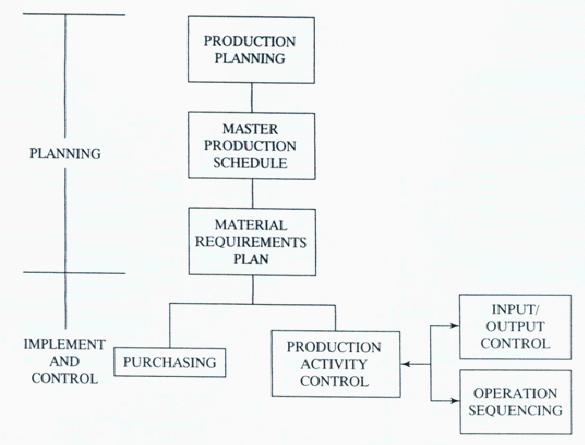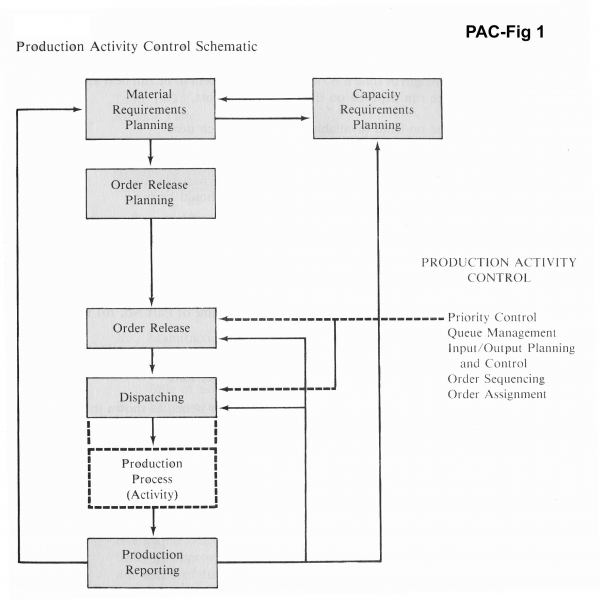6. Production Ativity Control

The time arrives when plans must be executed, when material requirements planning and capacity requirements planning have been completed and the detail purchasing and production schedules must be determined and released for execution. The function of production activity control (PAC)--often called shop floor control (SFC)---is to have activities performed as planned, to report on operating results, and to revise plans as required to achieve desired result
Order release, dispatching, and progress reporting are the three primary functions of PAC. Dispatching is the activation of orders per original plans. Dispatching decisions are affected by queue management, I/O control, and priority control principles and techniques that are intertwined and mutually supportive. They are useful in the management of lead-time, queue length, work center idle time, and scheduled order completion. Reports on the status of orders, materials, queues, tooling, and work center utilization are essential for control. Many report types with various information are possible. Examining a given situation will reveal which reports and information are required.
Production activity control (PAC) is responsible for executing the MPS and the MRP. At the same time, it must make good use of labor and machines, minimize work-in-process inventory and maintain customer service.
The MRP authorizes PAC:
- To release work orders to the shop for manufacturing;
- To take control of work orders and make sure they are completed on time;
- To be responsible for the immediate detailed planning of the flow of orders through manufacturing, carrying out the plan and controlling the work as it progresses to completion;
- To manage day-to-day activity and provide the necessary support.
Planning
The flow of work through each of the work centers must be planned to meet delivery dates, which means PAC must do the following:
- Ensure that the required materials, tooling, personnel and information are available to manufacture the components we needed;
- Schedule start and completion dates for each shop order at each work center so the scheduled completion date of the order can be met. This will involve the planner in developing a load profile for the work centers.
Implementation
Once the plans are made, PAC must put them into action by advising the shop floor what must be done. Usually instructions are given by issuing a shop order. PAC will:
- Gather the information needed by the shop floor to make the product;
- Release orders to the shop floor as authorized by the MRP. This is called dispatching.
Control
Once plans are made and shop orders released, the process must be monitored to learn what is actually happening. The results are compared to the plan to decide whether corrective action is necessary. PAC will do the following:
- Rank the shop orders in desired priority sequence by work center and establish a dispatch list based on this information;
- Track the actual performance of work orders and compare it to planned schedules. Where necessary, PAC must take corrective action by replanning, rescheduling or adjusting capacity to meet final delivery requirements;
- Monitor and control work-in-process, lead times and work center queues;
- Report work center efficiency, operation times, order quantities and scrap.
Dispatch list.

Once all the operations are scheduled and the material has been picked and delivered to the work center, you can print a dispatch list to keep track of work order and work center status. A dispatch list (or query) displays by work center all work orders with operations scheduled for that work center in the following order:
All work orders, completed but not yet moved to another work center.
All active (started) work orders (in-process and in-setup).
All work orders which are ready to start (in queue and coming).
All work orders on hold.